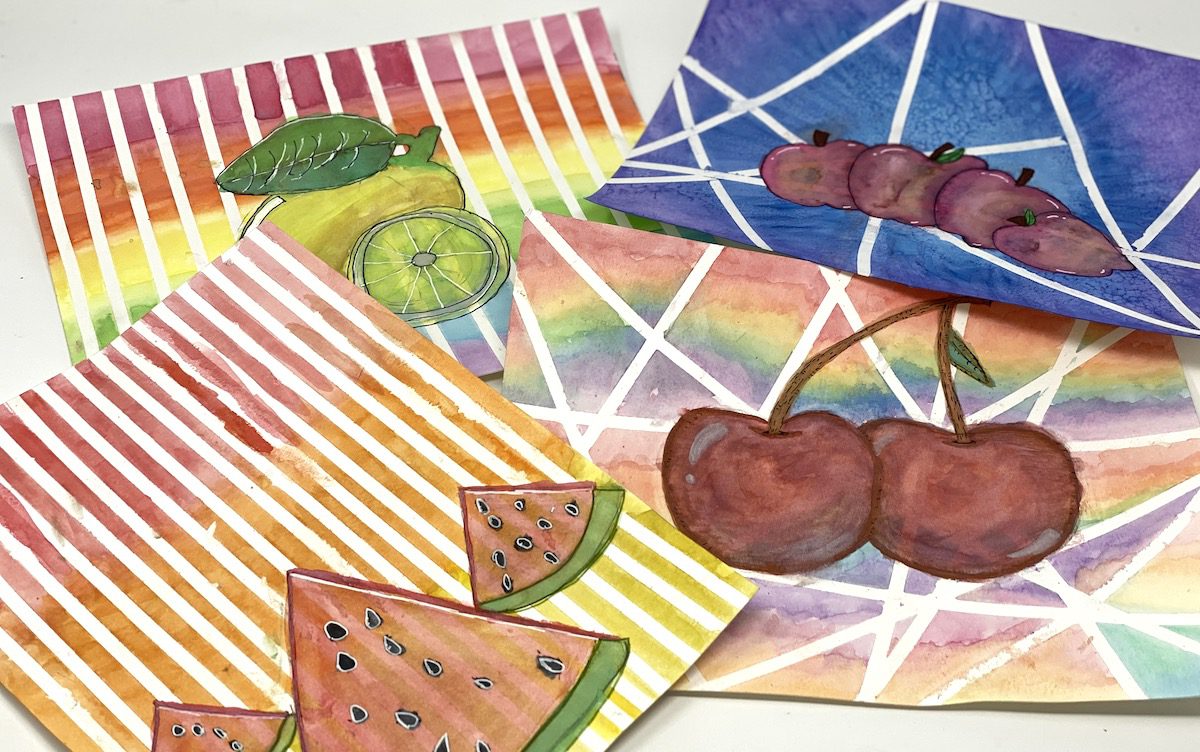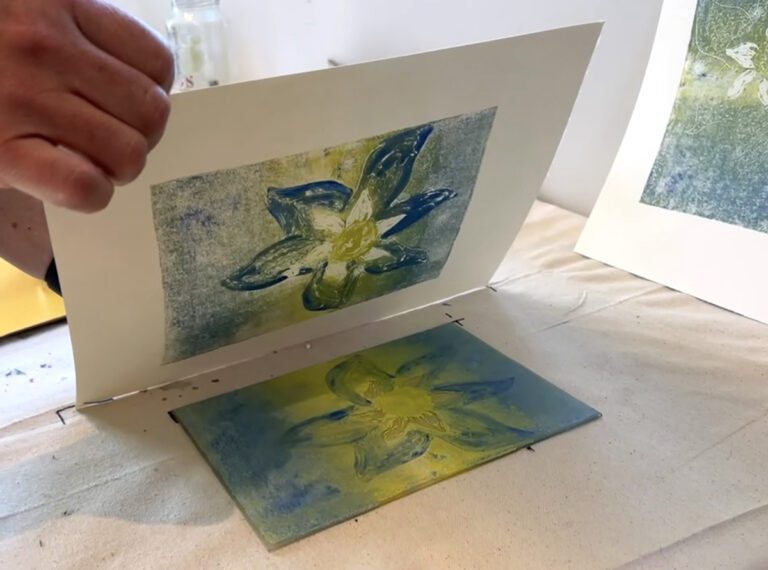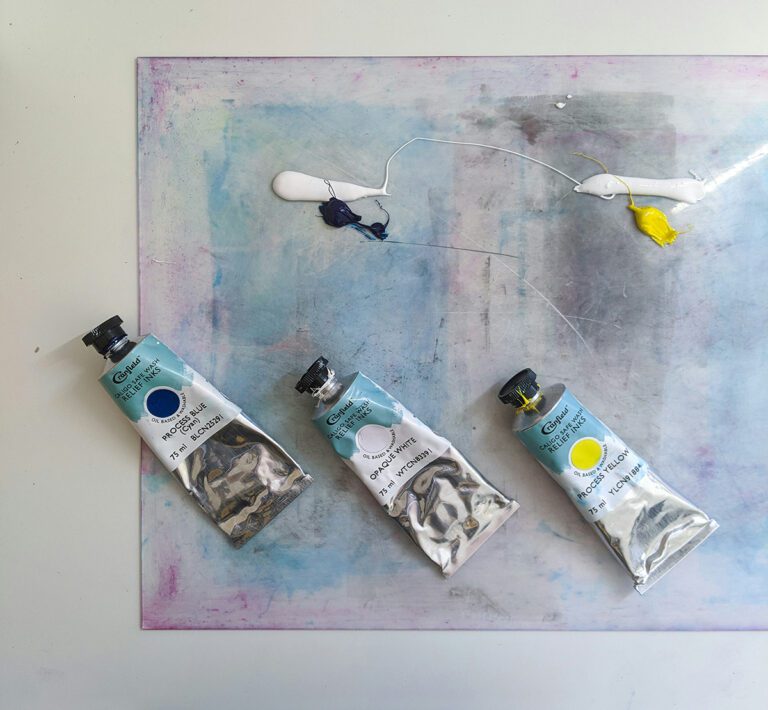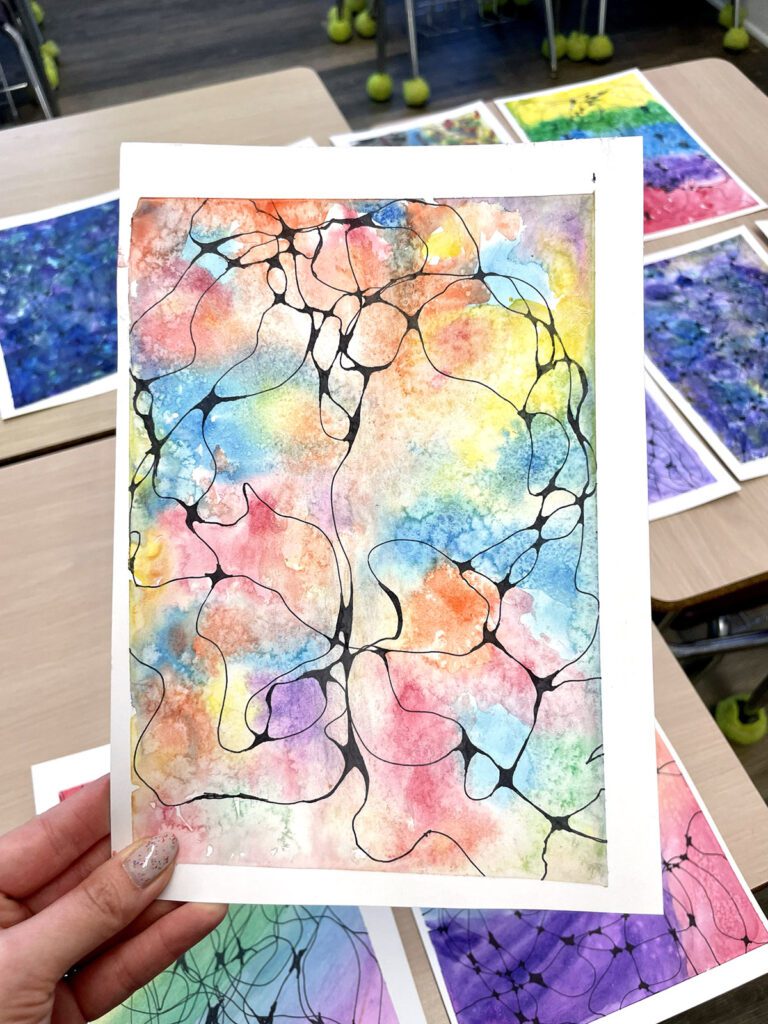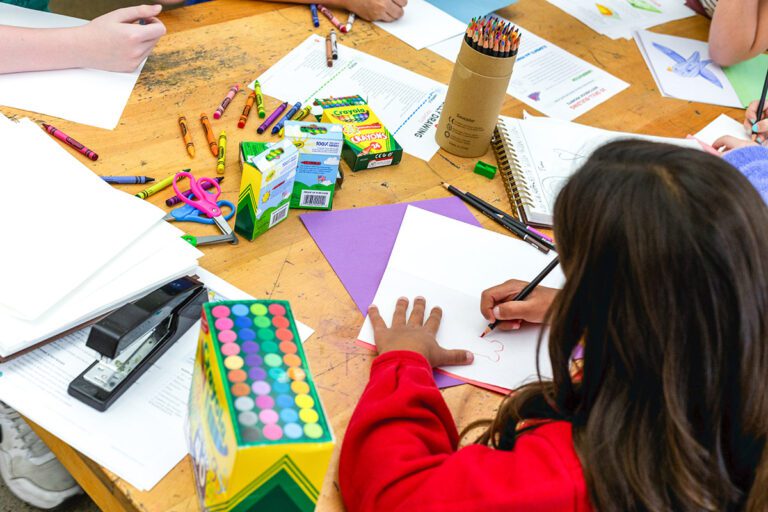Watercolor is a versatile medium. It can be used with all age levels and is often readily available outside the classroom setting. As an art teacher knows, art materials are expensive, but there are many great affordable options when it comes to watercolor. Because watercolor is a rather low-maintenance practice, it is a process that can follow students outside of the classroom and lead to many benefits.
However, just because the supply setup isn’t extensive, doesn’t mean the medium is simple to use. Whether you are using watercolors with kindergartners or high school students, there are challenges students will run into. The art of watercolor requires patience and practice; two components our students aren’t always willing to explore. But they can be taught!

Take a look at this watercolor lesson that will teach your students the art of patience while helping them refine their watercolor skills through depth, layering, and practice.
An Engaging Watercolor Lesson for All Grade Levels
1. Create A Background
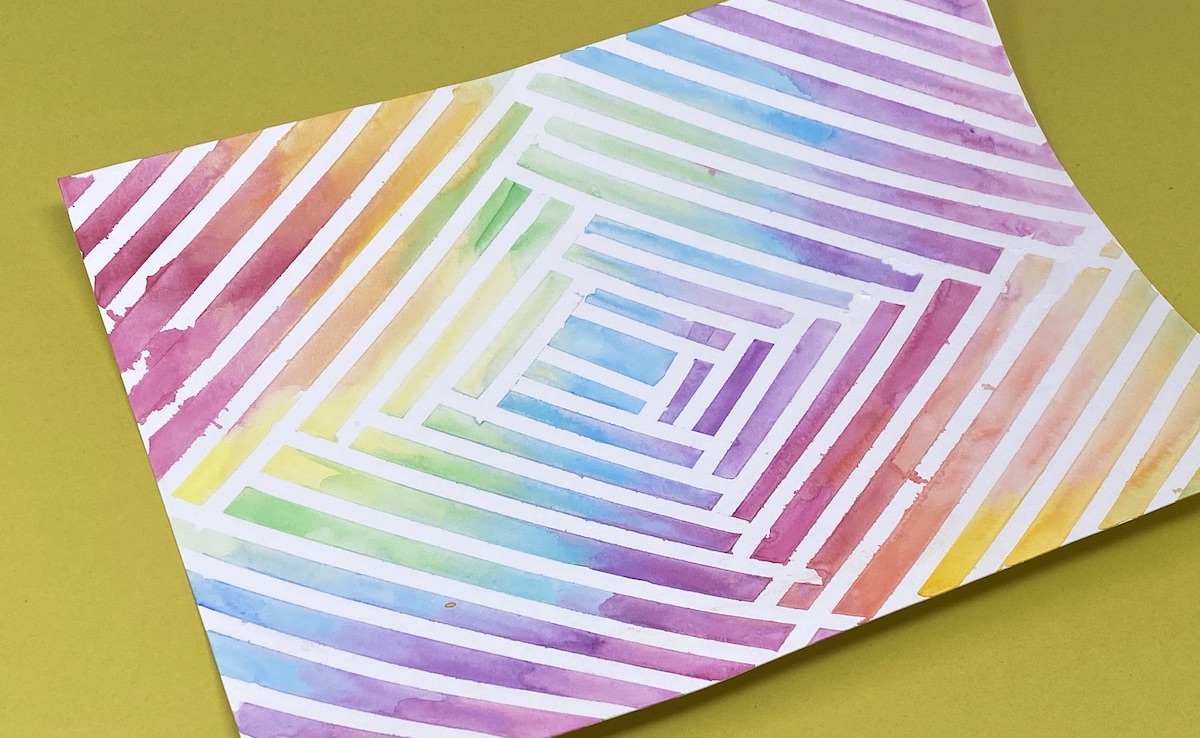
Exploring watercolor techniques is a process most students enjoy. Because there are various ways to experiment and create special effects, students are often engaged in this process. After taking the time to explore a variety of techniques, encourage your students to create a background. The background example shown here uses gradient and masking tape resist techniques. For this activity, any background can be used. You will want to review basic color concepts with students. For instance, it might not be the best idea to start with a super dark background like black. Starting too dark won’t allow students to layer on top of their background.
The Best Way to Introduce Watercolors to Your Students
2. Draw on Top of the Background

After a background is complete and entirely dry, it’s time to draw. Choosing the desired subject matter, students can begin lightly sketching on top of the background. You must encourage students not to press too hard, as it will be difficult to erase. Students will be able to erase minimally, but too much erasing will cause the watercolor to actually wear away.
3. Start Layering Watercolors

Once the drawing is complete, it’s time to start painting again. During this step, it is important that your students understand layering with watercolors primarily using the glazing technique. To find success, remind students not to use too much pigment on the first layer. One of the best features of watercolor is that it can create rich depth through layering. However, for this to work, layers need to be thin and given time to dry. Emphasize that students will not get the desired look with one layer; it will take many layers to achieve the wanted result.
6 Ways to Take Your Students Beyond Watercolor Techniques
4. Build Up More Watercolor Layers

As the layers dry, continue to build up the watercolor. With each new layer, the colors will start to become more saturated and brilliant. As the layers build, it’s still important to keep the paint transparent and not too saturated. When doing this glazing effect, it’s also essential to work quickly. If the paint is worked over too much, it will reactivate the layer underneath, causing it to become one flat solid color. Thin, light layers are the key to successfully building up the painting.
A Better Way to Teach Watercolor Techniques
5. Add Defining Details
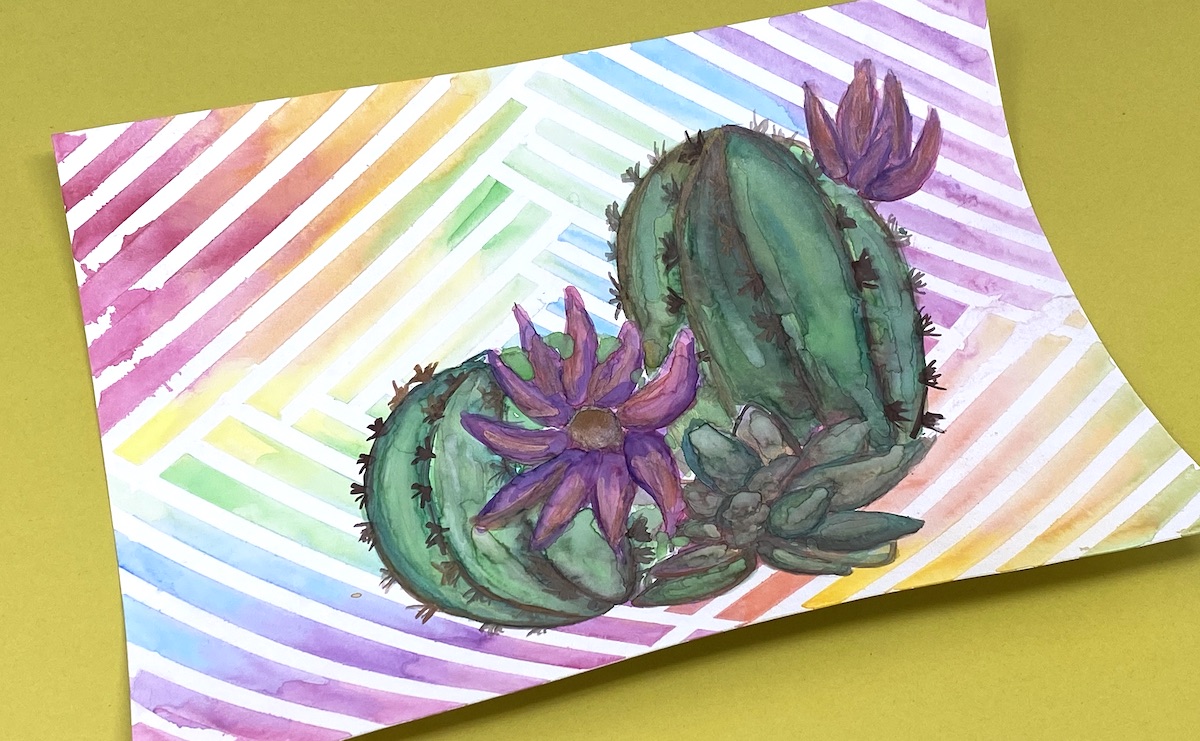
Once the painting has reached the desired result, it’s time to add some finishing touches. Chances are there probably is a little bit of pencil that can still be seen. Using defining techniques is an excellent way to hide any of these imperfections. Encourage your students to use dry brush techniques, or explore different outlining techniques like using different drawing tools like pens. Once the details are added, the painting will start to pop!
The watercolor process is excellent to add to the arsenal of artistic practices that go beyond the classroom and can last a lifetime. Teaching your students advanced or unique techniques will open up their creativity while teaching them patience and new watercolor concepts. The next time you find your students needing a watercolor challenge, try out this activity.
What’s your favorite watercolor lesson to teach?
What watercolor process do your students struggle with the most?
Magazine articles and podcasts are opinions of professional education contributors and do not necessarily represent the position of the Art of Education University (AOEU) or its academic offerings. Contributors use terms in the way they are most often talked about in the scope of their educational experiences.
